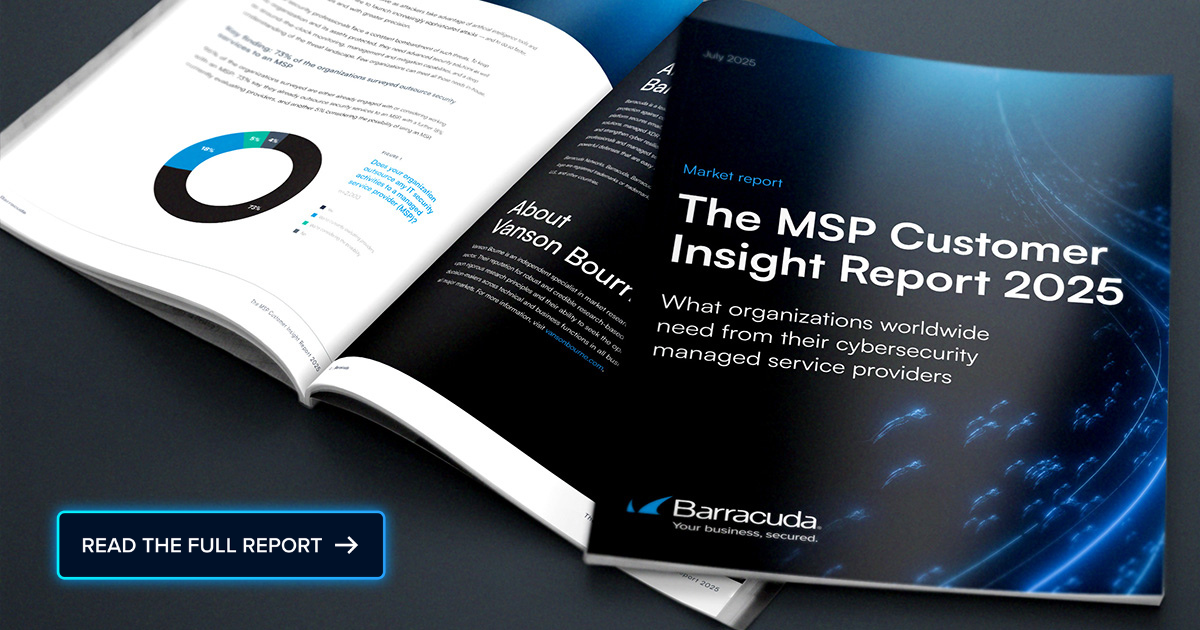 Every managed service provider (MSP) has a unique technology stack. Who your clients are and what you specialize in shape your technical needs. That said, no matter how unique you are, the need to upgrade is universal. Learn more in this edition of Tip Tuesday.
Every managed service provider (MSP) has a unique technology stack. Who your clients are and what you specialize in shape your technical needs. That said, no matter how unique you are, the need to upgrade is universal. Learn more in this edition of Tip Tuesday.
Eventually, all tools become outdated. How do you know which modern alternative is best? Is incorporating cloud computing capabilities necessary? Do employees need artificial intelligence tools? The questions are endless. The longer you go between upgrades, the wider the gap feels.
How do I know when it is time to upgrade?
A good rule of thumb is to seek new software if your current solution is clunky, overly expensive, or ineffectual. Upgrading outdated, costly information technology systems can increase your speed to market and improve your innovation capabilities. A thorough needs assessment can help you identify areas of improvement.
If your current platform works fine, you may be hesitant to upgrade. After all, why fix something that isn’t broken? While there is some truth to that sentiment, technology is a rapidly evolving space.
The longer you put it off, the farther behind you will be. On top of dulling your competitive edge, it could complicate implementation later. Say employees manually enter data into spreadsheets. Adjusting to automation, cloud computing, and a chatbot-centric user interface would take weeks, if not months. Timeliness is key, even if you feel unprepared for change.
How do I properly assess my technical needs?
Begin by asking yourself four questions. Can you tailor it to fit your MSP’s needs? Will it contribute to revenue-producing services? How will it improve operational efficiency? Will it simplify manual administrative work? Although there is more to consider beyond these factors, efficacy, value, efficiency and process simplification should drive your decision.
You should aim to find something that enables you to do more for less with fewer clicks. This way, you can cushion your bottom line without sacrificing performance quality or speed. The right solution will lead your clients to believe you effortlessly outperform your competitors.
Ideally, you should already have the data you need to decide whether or not to upgrade. You must continuously evaluate and optimize your tech stack to remain competitive in today’s ever-changing environment. However, if you aren’t tracking performance metrics, it doesn’t hurt to start now.
Ensure your data is accurate, relevant, and up to date. Anything less skews output, jeopardizing the selection process. While taking weeks or months to build a high-quality dataset may seem counterintuitive, you should temporarily hold off on implementation if it means making a more informed decision.
What do I need to consider during the assessment?
Start your assessment with a broad technical view, considering factors like integration quantity, uptime, and data retrieval time. Is your software highly interoperable, or are there multiple mismatches with newer systems? Can you intuitively navigate the dashboard, or does familiarization take weeks of training?
Quantify client satisfaction, product-market fit, and user feedback to define how your software impacts your business operations. If you rely on vendors, evaluate their cybersecurity posture, responsiveness, and reliability. Sometimes, a poor relationship with a third-party provider is enough of a reason to switch, even if their product works well.
Lastly, consider the last time you upgraded your software or integrated a modern tool. Innovation adoption speed is a valuable metric for evaluating technology adoption. A higher rate indicates efficient communication and well-executed projects.
What is your advice on software selection?
An informed decision ensures you improve your MSP’s operational efficiency and future-proof your tech stack. There are three main factors to consider.
Think of your employees
Changing the foundation of day-to-day operations will likely cause a temporary productivity dip because employees must relearn navigation. Selecting the right solution can minimize disruption, ensuring you continue to meet your customers’ needs.
Several factors can affect the adjustment timeline. For instance, one study found that 44 percent of people agreed that repeatedly logging in and out at work adversely affected their productivity and mood. Surprisingly, 26 percent left work unfinished if it meant avoiding logging in somewhere. For specifics, survey the staff before proceeding with implementation.
Prioritize scalability and interoperability
To determine scalability and interoperability, consider data storage capabilities, security features, and cost-effectiveness. Rank your options from best to worst for a visual representation of optimization.
Determine your tech stack’s scale
Regarding the cost of software development, size matters. It starts at around $5,000 for a minimally viable product and reaches up to $150,000 for a complex, full-scale application. While the specific figure depends on functionality complexity and developers’ hourly rates, it generally costs five figures.
The silver lining is that bigger isn’t always better — a large, overly complex solution will be just as clunky as an outdated one because it is not tailored to your MSP’s size or needs. When in doubt, start with something smaller that uses cloud computing, tiered pricing, or machine learning to offer scalability. That way, you know you always have room to grow if needed.
The right solution can improve operational efficiency
Luckily, evaluating and selecting the right software for your MSP tech stack is relatively easy, even when accounting for your unique differences. You should understand how to assess your technical needs and optimize operational efficiency.
Read the Tip Tuesday series for more insights on how to better your MSP business.
Photo: Yuri A / Shutterstock

